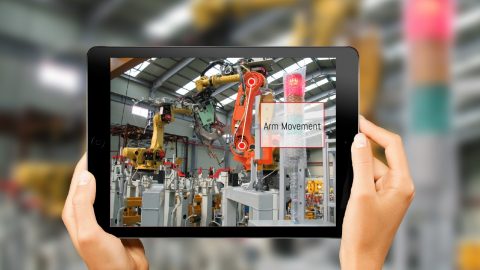
Before 2016, augmented reality in manufacturing has been nothing more than a pipedream. Now the potential is there for both Augmented and Virtual Reality in many industries, including one in the manufacturing industry. AR technology is already creating waves of strides on the industrial manufacturing plant floor.
AR aims to produce efficient operations by cutting down production downtime, quickly identifying the problems and keeping all the services and processes going. Let’s take a closer look at some of the ways in which AR can make the manufacturing industry the best it has ever been in years.
You Can Work Faster
Usually, it can be a hassle for fighter jet engineers to assemble an aircraft because it would take years of training to do so. But with the aid of AR glasses that use depth sensors, cameras, and motion sensors that overlay images into real world during work, engineers are able to see renderings of bolts, cables, part numbers and instructions on how to assemble a specific component.
With this method, the accuracy of engineers can go up to 96% and they are able to work 30% faster.
You Can Solve Your Daily Shop Floor Problems
During that time when your manufacturing company has to address all of the pain points of your shop floor, your teams require real-time access in order to deal with the problems at hand, whether they are within the company or outside of it.
With augmented reality in manufacturing on your side, your manufacturing operations employees can directly show all of the problems to your maintenance teams and engineers. They can also view KPIs in real-time as well as diagnose and resolve the issue without interfering with production.
You Can Access Data Easily
Service engineers and manufacturers can go up to any item that comes with IoT technology and identify any object to help you get any information from a company’s back-end enterprise resource planning system. With that, they will have access to the object’s specs, location, inventory, and lead times.
Your team can use an AR-enabled mobile app to scan QR codes to view live video feed, graphics, images, and use it to repair machines.
You Can Cut Down On Maintenance Time
Automobile company Bosch has been collaborating with startup AR firm Reflekt since 2013 to stay in the front of the automobile industry. It offers an app known as Common Augmented Reality Platform (CAP) that can find many applications, including maintenance.
Because it is app-based, it may feel somewhat similar to Pokemon Go. Now you can do all the things that your mechanic can do, except you won’t be paying for any of it. However, this technology still looks pretty good on PowerPoint Slides and YouTube videos.
You Can Reduce Production Downtime
If your manufacturing firm faces a production downtime due to your machines breaking down, it could cost your organization hundreds of thousands of dollars. But with the help of augmented reality devices, your team can hurriedly identify the flaw and prevent the downtime from ever occurring.
By having AR apps on your mobile devices, your team is able to visually identify the problem on the shop floor and resolve it there and then.
You Can Prevent Errors
Airbus has been using augmented reality in manufacturing for several purposes under the brand Smart Augmented Reality Tool (SART) since 2011. Although this technology can be used in many applications, aircraft programs use it more often. As a matter of fact, nearly 1000 employees use SART every day.
A very good example of this is the inspection of bracket installation in fuselage assembly when a tablet camera superimposes a virtual image of the as-designed assembly over the real as-built product. This technology quickly enables the engineer to detect any flaw.
You Use It For Training
Both VR and AR have demonstrated great potential when it comes to training. On the other hand, VR already has a bigger hand in this like in simulator training for military operations, aircraft pilots, maritime operations, advanced surgery and so much more.
When it comes to manufacturing, operators are trained for VR assembly tasks before they put into the real shop-floor assembly. Unfortunately, augmented reality in manufacturing has been less successful application-wise. In spite of there being many talks about its potential, there are fewer systems using it at the moment.
Source: Cerasis